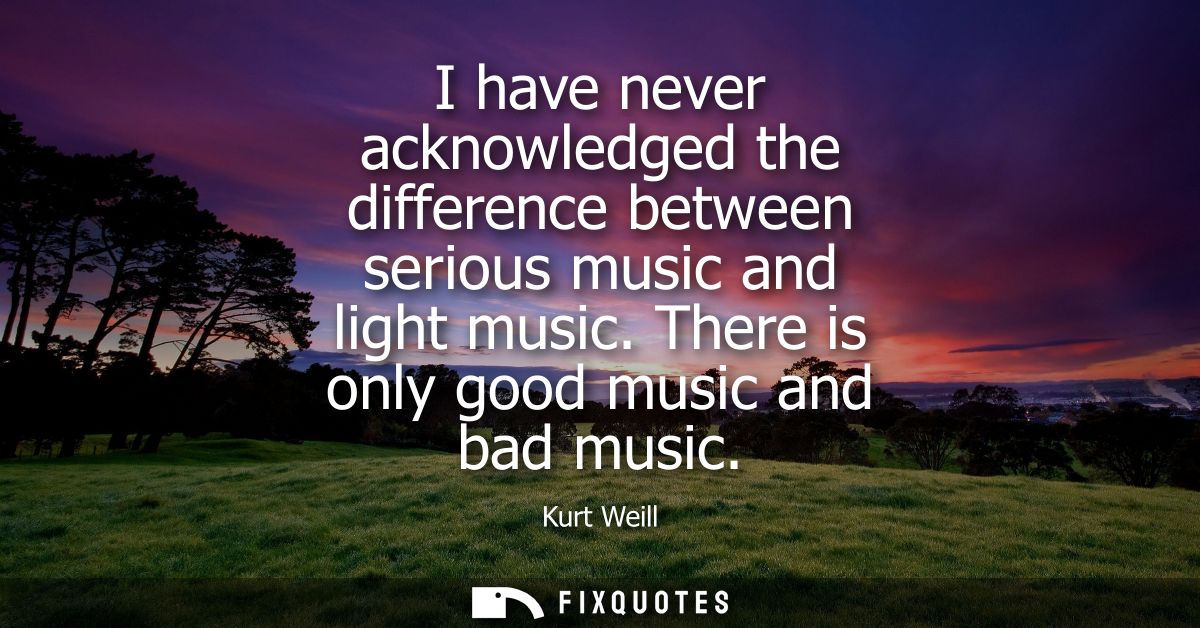"I have never acknowledged the difference between serious music and light music. There is only good music and bad music"
About this Quote
Kurt Weill’s assertion dismantles the traditional hierarchy often imposed upon musical genres. In many circles, music has been divided into “serious” and “light,” with serious music, typically classical, avant-garde, or highly complex compositions, deemed worthy of intellectual engagement and respect, while light music, such as popular songs, jazz, or musicals, is relegated to the background, dismissed as entertainment rather than art. By refusing to acknowledge this distinction, Weill challenges the biases that separate music into high and low art.
Weill’s perspective elevates the conversation about musical value above arbitrary definitions rooted in social class, tradition, or academic elitism. He implies that the labels applied to various genres have more to do with social constructs than with inherent artistic merit. To Weill, it is not the genre, complexity, or purpose of the music that determines its worth. Rather, it is the intrinsic quality of the composition, the sincerity of expression, and the impact it has on listeners.
By suggesting that only “good music and bad music” exist, Weill democratizes the musical landscape. Popular tunes and symphonies alike are judged by creativity, craftsmanship, and emotional resonance. This approach allows for beloved musicals, folk songs, and cabaret pieces to stand alongside revered orchestral works without prejudice. Weill, who himself moved fluidly between opera, theatre, and popular song, highlights the possibility that great artistry can flourish in any form or setting.
The statement is a call to listeners and critics to engage with music openly, to discard snobbery and seek authenticity, skill, and evocative power wherever they reside. Weill encourages us to form our opinions not by received categories, but by personal engagement and honest appraisal. In the end, it speaks to the universality of music’s appeal and the subjective nature of artistic experience.
More details
About the Author

